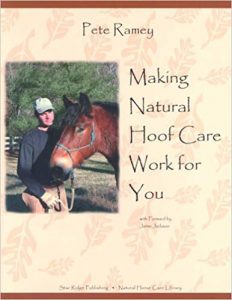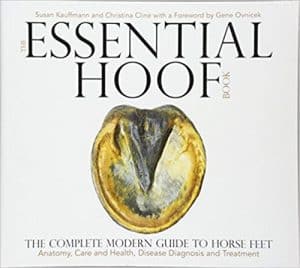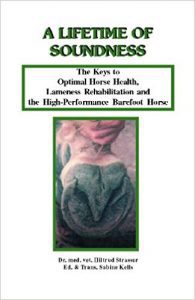Today’s post is a reader question about horse hooves:
Q: What is the healthiest way to take care of horse hooves? And is there any benefit to have your horse go barefoot for any length of time? If so, when?
 Lola Michelin, Northwest School of Animal Massage:
Lola Michelin, Northwest School of Animal Massage:
For many years, this was my weakest area of horsemanship; I just didn’t know enough about feet. All that changed when I took part in an equine dissection and discovered just how dynamic the hoof structure is.
The Horse featured an excellent video on just this subject: http://www.thehorse.com/videos/34609/is-the-hoof-smart-adaptability-of-the-equine-foot
Here are a few of the things I have come to believe over the years
1. A healthy hoof is the result of a healthy diet. The best genetics can’t help a horse without the right building blocks and the worst genetics can overcome a lot with them.
2. Barefoot truly is best, but not for every horse every time. When trying to transition a horse to no shoes, be patient and monitor their feet closely. I now run a retirement and rehabilitation stable in Puget Sound. I have a 32 year old pony with a history of founder and laminitis, a 22 yr old massive warmblood with navicular, a 25 yr old OTTB with shelly feet, a 10 yr old QH doing trails and a competitive H/J showing at 3’… all barefoot, all sound. No magic, just organic feed and hay, lots of turnout or hand walking and a good farrier and vet I confer with constantly. And I touch their feet everyday. I also have a show jumper and a “pasture pet” in front shoes so sometimes shoe support is the right answer.
3. No petroleum products! Not on their feet, not in their food. I use coconut oil or fish oil as hoof dressing… a bit spendy but you can stretch it by mixing it with witch hazel and spraying it on or rub a little between your palms to go a long way.
 Theresa Gagnon, Mending Fences Animal Wellness:
Theresa Gagnon, Mending Fences Animal Wellness:
I think that “healthy” is a relative term. Healthy is going to depend on the needs of the individual horse, the activities that the horse is being asked to participate in, and the footing or terrain that he will be asked to perform on.
Horse hooves will need either trimming or shoeing every 6-8 weeks to keep the hooves in proper balance. Balancing a hoof could be a subject all on its own – so I will not elaborate on that point. If the horse is going to be kept barefoot and will be asked to perform on rugged terrain, then some sort of protective boot may be required to keep the hoof from breaking up and protect him from sole bruising. Horses with naturally rugged feet do well unshod, others will require some sort of protection.
In dry climates, a good hoof dressing may be required to maintain proper moisture in the hoof. I found that when moving from New England to Colorado, my horses needed hoof dressing to be applied weekly as the clay soil draws the moisture out of their feet.
As for when to allow them to go unshod, if your sport has an off season, that would be a good time to pull the shoes. In New England, my horses were shod from April/May to November/December and then allowed to be barefoot during the winter months. This allowed the nail holes to grow out. Leaving them barefoot during the winter eliminated the need for snow pads and calks on the shoes to prevent slipping on the ice.
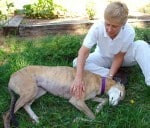 Amy Snow, Tallgrass Animal Acupressure Institute:
Amy Snow, Tallgrass Animal Acupressure Institute:
Barefoot is the best for proprioception, stability, balance, and hoof health – horses can feel their feet. Add metal and they are on ice skates all the time. Use boots for temporary protection if absolutely needed. It takes time for the hooves to toughen up after having shoes, give your horse time to adjust to being barefoot. It will be one of the best ways to have a strong, healthy horse.
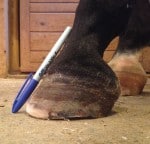 Lu Garnas, Garnas Equine Therapeutic Services:
Lu Garnas, Garnas Equine Therapeutic Services:
The best way to respond to the question is: It depends.
In the most general terms, barefoot is best…. if you can keep your horse working while managed by an actual “barefoot trimmer.” If not, 6 months out of shoes with regular “pasture” trimming is a healthy alternative and will help the hooves regain their natural function and form. There are subtle, and not so subtle, differences in the types of “barefoot” trimming. Please do not assume that just taking the shoes off a horse is the same as “going barefoot.”
The difficulty in answering the question is that the hooves are only a small part of the equation. Nutrition, breed, activity (or lack thereof), where you live, discipline, medical history and expectations you might have for your horse all play an important part in determining when, if ever, you are willing to support your horse barefoot. Some horses have little or problem making the transition from being shod for six months to removing their shoes in the off season. These horses have amazing feet and amazing farriers as they are keeping the hooves in good working condition without changing the shape, form or function of the structure itself. Other horses may have corrective shoeing, or medical reasons for a specific type of shoeing, and removing those shoes for six months without the assistance of a qualified and educated barefoot specialist and veterinary support could be a painful experience for the horse, and potentially the emotions of his human.
Based on where you live, and what your discipline may be, removing shoes should be done when the ground is the softest. That may be dry sand in the summer instead of hard packed during the rest of the year. In the northern climates, when fall moisture arrives is a good time to remove the shoes or transition to full-time barefoot.
Before you begin: Research your barefoot trimmers. Ask questions. Study a few different barefoot philosophies. Talk to your veterinarian. Interview your farrier. And again, ask questions.
and in these recommended books:
